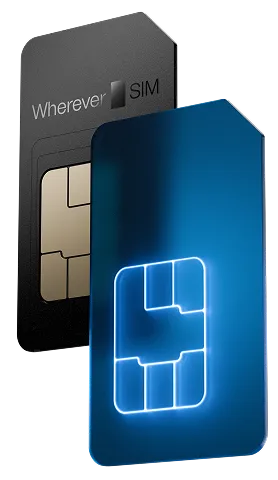Much of what we need to be more sustainable already exists. Renewable energies, lower-emission mobility, more efficient and resource-conserving production facilities. M2M technologies and the Internet of Things help us to act even more sustainably and thus protect people, the environment and resources.

One world is not enough
02.05.2024, Earth Overshoot Day for Germany. This day marks the point in the year when humanity has used up all the resources that the earth can regenerate within a year if it lives like we do in Germany. So if everyone in the world lived like we do in Germany, we would already need the resources of three Earths every year. For the global average, Earth Overshoot Day will be reached a little later this year, on 27.05.2024
Earth Overshoot Day has taken place earlier every year since it was first recorded on December 29, 1970. This development underlines the urgency of promoting more sustainable lifestyles and economic practices worldwide and conserving the earth's natural resources. Modern technologies in business and industry are needed to counteract this development. The digitalization of industry through the IoT and wireless communication play key roles here.
Climate killer mobility and energy
A large proportion of climate-damaging greenhouse gases come from the energy sector: the burning of fossil fuels to generate energy continues to be one of the biggest drivers of climate change. However, the transport sector also accounts for a significant proportion of total emissions. In 2023, greenhouse gas emissions in Germany fell by 10.1 percent for the first time - primarily due to the continuous expansion of renewable energies. This shows that the transformation of our energy and transportation infrastructures in particular is crucial to protecting the environment. Modern IoT and M2M technologies play a key role here, as these technologies not only enable us to use renewable energy more efficiently and safely, but also to further expand the availability of sustainable services.
M2M communication for wind power and PV
Effective real-time monitoring and control of energy-generating systems is already possible today with existing technologies and solutions. M2M SIM cards offer a secure, location-independent data connection, which is essential for continuous data transmission to optimize performance.
For photovoltaic systems, especially for remote ground-mounted systems or PV systems on large commercial roofs, M2M SIM cards allow system operators to remotely monitor system status and performance. This enables early detection if a system is not running as expected and faults are detected promptly. Maintenance can thus be carried out more quickly, performance restored and performance losses reduced.
The situation is similar for wind turbines, where M2M SIM cards enable operators to obtain critical operating data such as wind speed, rotor speed and energy generation in real time. This not only facilitates the early detection of problems, but also fulfills legal requirements for turbine operation. Remote access to these systems has been mandatory since 2022: system operators must be able to access the solar and wind power systems at any time in order to retrieve performance data and control the systems and energy generation. For offshore wind farms in particular, which are difficult to access, remote monitoring and control using M2M SIM cards offers an effective solution for avoiding operational interruptions and downtimes and complying with legal requirements.
Smart green wave: IoT & M2M in the e-mobility sector
Wireless data transmission also plays a crucial role in the expansion of low-emission e-mobility. For example, M2M solutions can be used to manage e-charging stations remotely so that real-time data on availability and status is available at all times. This enables optimized use and maintenance of charging stations, improves the customer experience by reducing waiting times and contributes to further expansion and acceptance of the charging infrastructure in the long term.
Another area that benefits from increasing connectivity is sharing providers and vehicle fleets. M2M technologies enable seamless communication between vehicles in a fleet and the central control system. This improves route planning and energy management, which can reduce operating costs and maximize battery life. The constant monitoring and analysis of vehicle data helps to identify maintenance requirements at an early stage and minimize downtime. Overall, M2M technology promotes a more efficient and sustainable mobility transition by optimizing the operation of both individual electric vehicles and entire fleets.
Transformative role of IoT and M2M technology
By optimizing the use of resources and energy consumption, M2M technologies make a significant contribution to reducing environmental pollution. In particular, the application in the areas of renewable energies and e-mobility shows how digital technologies can offer not only economic but also ecological benefits. By integrating them into the relevant areas of application, a decisive step can be taken towards a more sustainable future.

.avif)



